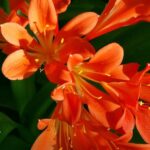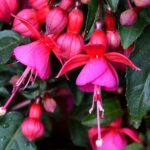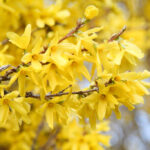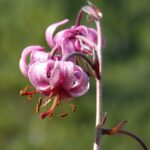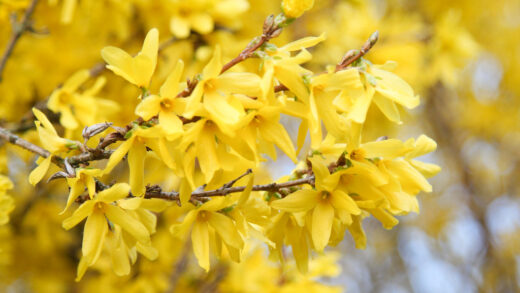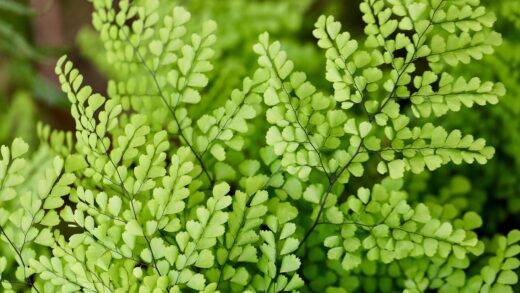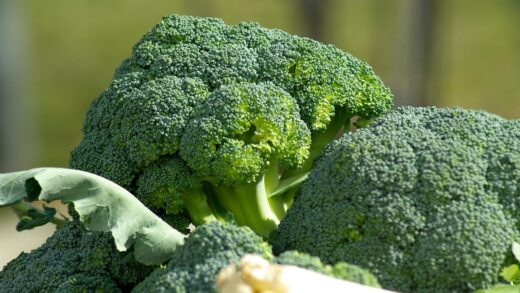Pruning and cutting back japanese barberry
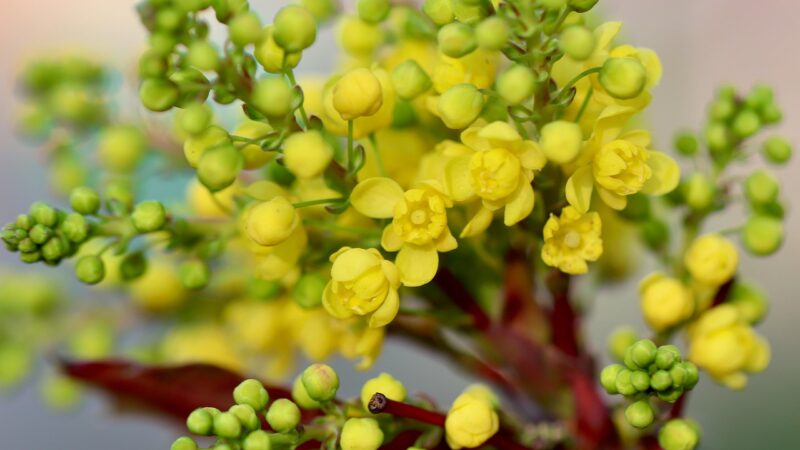
Pruning is a fundamental horticultural practice that, when applied correctly to Japanese barberry, can enhance its health, shape, and overall ornamental value. Due to the plant’s thorny nature, this task requires a degree of caution, but the rewards are a more attractive and vigorous shrub. The primary goals of pruning this species are to maintain a desired size and shape, to remove any dead or damaged wood, and occasionally, to rejuvenate an old, overgrown plant. Understanding the appropriate timing and techniques for these different objectives is key to pruning effectively, ensuring that every cut contributes positively to the long-term structure and vitality of the shrub.
The timing of pruning is largely dependent on the desired outcome. For general maintenance and shaping, the ideal time is in the late winter or very early spring, while the plant is still dormant. Pruning during this period is advantageous because the branch structure is clearly visible without the obstruction of leaves, making it easier to identify and remove problematic branches. This timing also ensures that the pruning cuts will be quickly healed by the vigorous flush of new growth that occurs in the spring, minimizing stress on the plant.
Different pruning objectives call for different techniques. A light annual trimming might be all that is needed to maintain the neat, formal shape of a hedge, while a more selective thinning approach is better for preserving the natural, graceful form of a specimen plant. For older shrubs that have become woody, sparse, and unattractive, a more drastic method known as rejuvenation pruning can be employed to restore their density and vigor. This involves cutting the entire plant back to near ground level, a technique to which this resilient shrub responds remarkably well.
Regardless of the technique used, wearing appropriate protective gear is essential when pruning Japanese barberry. The sharp spines can easily cause painful scratches and skin irritation. A pair of thick, puncture-resistant gloves, preferably with long cuffs, and long-sleeved clothing are highly recommended to protect the hands and arms. Using sharp, clean pruning tools, such as bypass pruners for smaller stems and loppers or a pruning saw for thicker canes, will ensure clean cuts that heal more readily and reduce the risk of introducing disease.
The purpose and timing of pruning
The primary reason for pruning Japanese barberry is to maintain its health and appearance. A key objective is the removal of the “three D’s”: any wood that is dead, damaged, or diseased. This sanitation pruning can be done at any time of year whenever a problem is noticed. Removing these branches prevents the potential spread of decay or disease to healthy parts of the plant and eliminates weak points in its structure that could be further damaged by wind or snow. It is a fundamental aspect of good plant hygiene.
More articles on this topic
Another major purpose of pruning is to control the size and shape of the shrub. Japanese barberry is often used for hedging or in formal garden designs where a specific size and a neat, tidy appearance are required. Regular shearing or trimming is used to maintain these formal shapes and prevent the plant from outgrowing its designated space. For specimen plants, more selective pruning is done to enhance their natural form, correct structural flaws like crossing branches, and maintain a desirable scale within the landscape.
Pruning can also be used to improve the overall density and vigor of the plant. By selectively thinning out older, less productive stems, the gardener encourages the growth of new, vigorous shoots from the base of the plant. This process of renewal keeps the shrub looking youthful and dense from the ground up, preventing the common problem of older shrubs becoming bare and woody at their center. This type of pruning improves both the health and the aesthetic quality of the plant by promoting better light penetration and air circulation throughout the canopy.
The timing of these pruning activities is crucial for the plant’s health. Major structural pruning, thinning, and size reduction should always be performed in the late winter or early spring before the plant breaks dormancy. Pruning at this time minimizes the stress on the plant and leverages the impending spring growth spurt for rapid recovery. Light shearing of formal hedges can be done after the initial spring flush of growth and may be repeated once or twice during the growing season if needed. Avoid any significant pruning in the late summer or fall, as this can stimulate new growth that will not harden off before winter.
Techniques for maintenance pruning
Maintenance pruning for Japanese barberry typically focuses on preserving its natural shape while keeping it healthy and well-proportioned. The best approach is a technique known as thinning, which involves selectively removing entire branches back to their point of origin on a larger stem or back to the base of the plant. This method is superior to simple shearing for maintaining the informal, graceful habit of most cultivars. The first step in this process is always to identify and remove any dead, damaged, or crossing branches.
More articles on this topic
After the initial cleanup, the next step is to thin out some of the oldest, thickest canes. These are often darker in color and woodier than the younger stems. By reaching into the center of the shrub and cutting a few of these older canes right down to the ground, you open up the plant’s structure. This allows more light and air to reach the interior of the shrub, which stimulates new growth from the base and reduces the likelihood of fungal diseases. A good rule of thumb is to remove no more than one-third of the oldest canes in any given year.
When shortening branches to control the plant’s overall size or to improve its shape, it is important to use proper cutting techniques. Always make the cut just above a healthy, outward-facing bud. This will encourage the new growth to grow outwards, maintaining a more open and attractive shape. Avoid leaving long, barren stubs, as these can die back and become entry points for pests and diseases. This detail-oriented approach results in a much more natural-looking and healthier plant than indiscriminate shearing.
For formal hedges, a different technique is required. Shearing involves using hedge trimmers to cut the outer branches to a uniform, flat plane. When shearing a hedge, it is critical to shape it so that the base is slightly wider than the top. This trapezoidal shape ensures that the lower branches receive adequate sunlight and remain full and leafy. If the top of the hedge is allowed to become wider than the bottom, it will shade out the lower portions, causing them to become thin and bare over time.
Methods for rejuvenation pruning
Rejuvenation pruning is a drastic but highly effective technique used to restore old, overgrown, and unproductive Japanese barberry shrubs. This method is appropriate for plants that have become very woody, with a large, non-leafing center and sparse foliage only at the ends of the branches. It is essentially a complete renewal of the plant, taking advantage of its ability to regrow vigorously from its root system. The best and only time to perform this type of pruning is in the late winter or very early spring, while the plant is fully dormant.
The process of rejuvenation pruning is straightforward but requires a decisive hand. Using a sharp pair of loppers or a pruning saw, all the stems and canes of the shrub are cut back to a height of about four to six inches from the ground. While this may seem extreme, leaving a framework of stumps, it is the most effective way to stimulate a complete flush of new growth. The established, healthy root system will have ample energy reserves to push out a multitude of new, vibrant shoots as the weather warms in spring.
Following the hard pruning, the plant will require some basic care to support its recovery. It is important to ensure the plant receives adequate water during its first season of regrowth, especially during any dry periods. Applying a balanced, slow-release fertilizer or a layer of compost around the base of the plant in the spring can also provide the necessary nutrients to fuel the rapid development of new stems and foliage. Within a single growing season, a rejuvenated shrub will often grow back into a much denser, more compact, and more attractive version of its former self.
An alternative, less drastic method of renewal is a gradual rejuvenation, which is performed over a three-year period. In the first year, one-third of the oldest canes are cut back to the ground. In the second year, another third of the old canes are removed, and in the third year, the final third of the original stems are cut. This approach staggers the renewal process, so the plant maintains some size and presence in the landscape throughout the three years, which may be preferable in some garden situations. However, the one-time hard pruning typically yields the most dramatic and uniform results.








